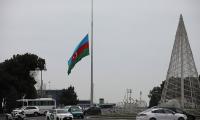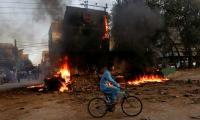With 16 MNAs (plus four reserved seats), Balochistan’s representation in Pakistan’s parliament is lower than that of Karachi and Lahore, constituting only 5.9 per cent of the total directly elected representatives in the National Assembly.
Both Khyber Pakhtunkhwa (KP) and Sindh enjoy approximately 16 per cent and 22 per cent representation respectively, and have played significant roles in the country’s power structure. A straightforward solution to the problems in Balochistan involves amending the law to triple the province’s seats to around 60, potentially resolving the power struggle between authorities and Baloch political parties. This adjustment would incentivize mainstream parties to focus on the province’s development, leveraging its increased numerical strength and fostering the emergence of political leaders from various regions.
This move aims to break the dominance of local leaders (sardars) and pave the way for a transformed Balochistan in Pakistan’s assembly, enabling three smaller provinces to collectively wield enough power to form a government. This shift could alleviate the historical hegemony of Punjab and motivate leaders like the Sharifs, Zardari, and Imran Khan to prioritize the historically marginalized province.
Internally, an increase to 60 MNAs would lead to more municipal units and provincial constituencies, decentralizing power to a larger populace. In essence, echoing Benazir’s famous statement, “democracy is the best revenge”, the proposal foresees increased political activity and mainstreaming, particularly among those disheartened with Pakistan and Punjab. Coastal cities such as Gadani, Ormara, Pasni, and Jiwani could evolve into economic zones, offering entry points and economic opportunities for the province and the country. Non-coastal areas would also witness increased development.
Addressing the issue of missing persons necessitates enhanced information and corresponding actions. With 60 MNAs from Balochistan, mainstream political parties would likely take the matter more seriously, amplifying the voices of the voiceless.
Currently, political parties competing at the federal level lack sufficient incentive to confront the culprits of this issue, given Balochistan’s less than 6.0 per cent representation in the National Assembly. A Baloch activist on X (formerly Twitter) commented on the recent release of a PTI-linked activist by saying that since she was a Punjabi she was out of jail; had she been a Baloch, no one would have even thought about talking about her at such a big scale. I think the activist’s observation is valid and this objection is linked to all of the major problems in Balochistan.
The solution lies in making Balochistan more important for the state of Pakistan. This will not only bring more development and flow of investments in Balochistan but also force local representatives to compete for the betterment of the province.
The writer tweets/posts @FarrukhJAbbasi
MPAs ask for their salaries and benefits to be at par with high court judges and exempt from tax
This system fosters and places premium on VIPs, facilitating VIP culture, which is alive and kicking
Imagine this waste covering over 15,500 cricket stadiums, piled three meters deep every year
If there is one thing that can be gleaned from politics today, it is that we no longer speak same language
Postman argues that “typographic mind” was yielding to “televisual mind”
Pakistan is well poised to meet opportunities that Artificial Intelligence will offer for developments in industries







